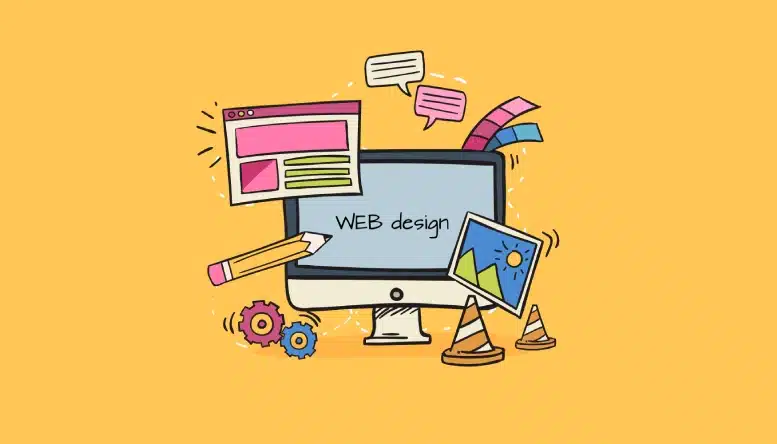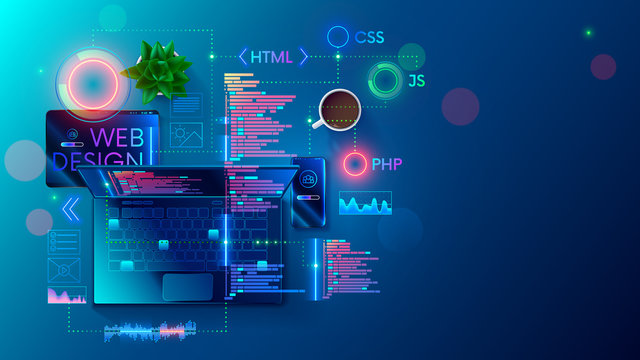Customized Aligned Position Web Design: Unique Web Designs That Reflect Your Brand’s Identity
Customized Aligned Position Web Design: Unique Web Designs That Reflect Your Brand’s Identity
Blog Article
The Very Best Types of Website Design to Boost Customer Experience and Interaction
In the ever-evolving landscape of digital communication, the effectiveness of Web style considerably affects individual experience and interaction. Different layout methods, such as minimal, responsive, and interactive designs, each deal special advantages that can cater to diverse user needs.
Minimalist Website Design
As electronic landscapes become progressively messy, minimalist website design has become a powerful technique to improving individual experience. This design ideology focuses on simpleness, concentrating on crucial elements while removing unneeded diversions. By using sufficient white space, uncomplicated navigating, and a restricted shade combination, minimal design cultivates clearness and directs customer interest to essential web content.
The core concept of minimal Web layout is to produce a seamless communication for customers. By decreasing cognitive lots, customers can promptly understand information without feeling bewildered. This straight technique not just enhances functionality but additionally motivates involvement, as visitors are more probable to check out a website that is easy and aesthetically enticing to browse.
In addition, minimal style commonly stresses typography and images, utilizing these components purposefully to communicate messages properly. In significance, minimal Web design is not simply a fad; it is a thoughtful method that acknowledges the value of user-centered layout.
Responsive Web Style
In today's varied electronic atmosphere, receptive website design has actually ended up being essential for creating a smooth individual experience across a wide range of gadgets. As users gain access to web sites on mobile phones, desktop computers, tablets, and laptops, the capacity of a website to adjust its layout and content to various screen dimensions and resolutions is vital.
Responsive Web layout utilizes versatile grids, images, and CSS media questions to make certain that Web material is presented ideally, despite the gadget used. This technique not just enhances the visual appeal of a website however also substantially improves functionality. Users are more probable to engage with a site that provides a constant experience, as it gets rid of the stress of having to zoom in or scroll exceedingly.
By adopting responsive layout, organizations can improve their visibility and get to a wider target market. In recap, receptive Web layout is an essential technique that improves user experience, involvement, and general contentment.
Interactive Website Design
Receptive website design prepares for boosting individual experience, however interactive Web design takes this an action further by involving users in a more dynamic method - Aligned Position Web Design. By including aspects such as computer animations, clickable prototypes, and real-time comments, interactive website design captivates customers, drawing them right into a richer surfing experience
This approach not only cultivates engagement however also urges customers to explore material actively instead of passively eating it. Techniques such as gamification, where individuals gain rewards for finishing tasks, can substantially enhance the moment invested on a site and improve general complete satisfaction. Interactive features can simplify complicated information, making it much more enjoyable and digestible.

Incorporating interactive layout components can additionally cause higher conversion prices, as users are extra most likely to involve with a website that proactively entails them. Aligned Position Web Design. Eventually, interactive website design changes customer experiences into memorable journeys, making certain that visitors return time after time
Apartment Layout
Characterized by its minimalistic technique, level design emphasizes simpleness and performance, removing unneeded elements and concentrating on necessary attributes. This layout philosophy prioritizes use, making sure that customers can browse interfaces effortlessly and performance. By using a tidy visual, flat style removes the mess usually located in much more luxuriant styles, thereby enhancing customer emphasis on content and performance.
The hallmark of flat layout hinges on its usage of vibrant shades, straightforward typography, and geometric shapes. These components contribute to an aesthetically appealing interface that is both friendly and contemporary. Additionally, level layout promotes a sense of clarity, permitting customers to determine necessary actions and details without disturbance.
Furthermore, flat design is particularly efficient in responsive Web design, as its simpleness converts well across different tools and display dimensions. By focusing on necessary attributes, level style not just satisfies customer needs yet also motivates smooth communication, making it an essential component of efficient Web design methods.
Adaptive Web Layout
Flexible Web layout customizes the individual experience by developing multiple fixed formats customized to various screen dimensions and devices. Unlike responsive design, which fluidly changes a solitary design, flexible layout utilizes distinct formats for go to this website specific breakpoints, guaranteeing ideal discussion on numerous platforms. This approach allows designers to concentrate on the unique features of each device, boosting use by providing precisely what customers need based on their context.
One of the primary benefits of flexible website design is its ability to optimize load times and efficiency. By offering customized web content and images that fit the individual's tool, internet sites can lessen information usage and enhance loading rates. This is particularly beneficial for customers with slower connections or restricted data strategies.

Additionally, flexible design assists in an extra constant and controlled branding experience. Considering that designers develop several formats, they can make certain that the aesthetic aspects align with the brand name's identification throughout various systems - Aligned Position Web Design. This causes a natural customer experience, enhancing engagement and promoting customer retention
Conclusion
Minimal style promotes clearness and focus, while responsive layout ensures adaptability throughout different tools, promoting access. Collectively, these style approaches add to the development of user-friendly environments that not only boost satisfaction but also drive greater conversion prices, emphasizing their vital value in modern Web style methods.

Minimal style official statement fosters clearness and focus, while receptive design makes sure adaptability across numerous gadgets, promoting accessibility. Jointly, these style comes close to contribute to the development of easy to use settings that not just boost contentment but likewise drive higher conversion rates, highlighting their critical significance in modern Web style strategies.
Report this page